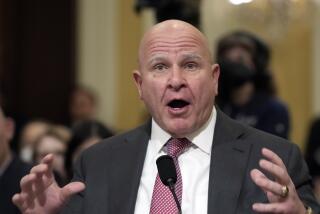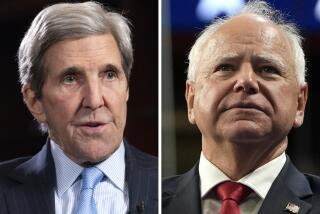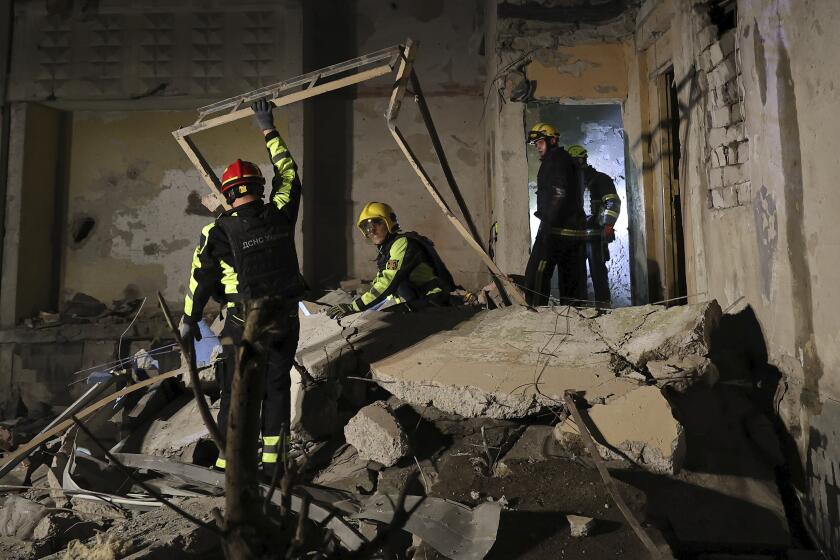Female military members and vets turning away from GOP

It had been months since retired Lt. Cmdr. Michele Fitzpatrick paid attention to news coverage. She was turned off by President Trump’s tweetstorms and attacks on critics such as the late Republican Sen. John McCain, a war hero. But as the November midterm elections approached, she fired up her laptop.
A member of the U.S. Coast Guard Academy’s Class of 1980, the first to include women, Fitzpatrick began researching candidates and poring over issues. On Election Day, she voted without hesitation: all Democrat.
“I just don’t think what’s happening now is helpful,” Fitzpatrick, of Groton, Conn., said in a telephone interview, pointing to the negative discourse in Washington. “It’s almost like watching kids and bullies on the playground instead of people actually doing something about helping this country to survive and to thrive.”
That’s hardly a startling view from a Democrat these days. But from a military vet?
Long seen as a bastion of support for Republicans, the face of the U.S. military and its veterans is changing — and perhaps too is their political bent.
Veterans, by and large, did vote for GOP candidates Nov. 6, affirming Trump’s frequent claim that they stand among his strongest backers. But more women are joining the military, and they are bucking the pattern, according to data from AP VoteCast.
The 60-year-old Fitzpatrick recalls suppressing her opinions as a young “hardcore Democrat” in an overwhelmingly Republican military but finding other ways to promote change, such as supporting other female cadets.
Now, women in the military are helping elect new Democratic lawmakers and spur discussion on once little-mentioned topics such as sexual harassment and women in combat roles. As political candidates, female veterans also had a breakout performance in the midterms, sometimes campaigning as a foil to Trump: empathetic and competent on issues such as health care while also trustworthy on military and defense, typically a GOP strength.
“I see this as a beginning edge of a larger movement,” said Jeremy Teigen, professor of political science at Ramapo College and author of “Why Veterans Run: Military Service in American Presidential Elections, 1789-2016.”
Both current and former female service members were more likely to vote in the 2018 midterm elections for Democrats than Republicans, 60% to 36%, according to the data from VoteCast. Men with military backgrounds voted Republican by roughly the same margin, 58% to 39%.
A record number of female veterans — four — were elected to the House, all Democrats. Three won in political swing districts, helping give the party control of the chamber next year.
Democratic Rep.-elect Chrissy Houlahan, a former Air Force captain, said she was motivated to run after organizing a bus trip last year to the Women’s March in Washington. She felt her election would serve as a repudiation of Trump, but she avoided sharp rhetoric in favor of a message of service to country and getting things done.
She recalled Pennsylvania voters telling her they were exhausted by gridlock and partisan attacks and “would like our nation and our democracy and our values to stabilize to what we can recognize.”
All told, 55% of voters who had served in the military backed Republican candidates in the elections, compared to 42% who supported Democrats, according to VoteCast data.
AP VoteCast is a nationwide survey of more than 115,000 midterm voters — including more than 4,000 current and former service members — conducted for the Associated Press by NORC at the University of Chicago.
Currently, there are more than 20 million veterans of the U.S. armed forces, about 10% of them female, the fastest growing subgroup. In the U.S. military forces, 16.6% of those enlisted are women, up from about 2% in 1973.
Women now make up 20% of the Air Force, 19% of the Navy, 15% of the Army and 8.6% of the Marines, according to Defense Department figures. In the Coast Guard, a division of the Department of Homeland Security, women make up 22% of the officers and 13% of those enlisted. The Coast Guard Academy, where Fitzpatrick was among the first women to attend in 1976, enrolled a class this year that is 40% female, a new high.
Teigen, who studies military voting, said that in the context of the #MeToo movement against sexual harassment, female veterans running for office provided a contrast for voters, “someone who was willing to volunteer to take time out of their youth to serve their country and stand up for others,” compared to Trump, a New York billionaire with five wartime draft deferments and a fraught history with women. Of the military veterans who ran for the House, 12 were women, the highest number ever.
More to Read
Sign up for Essential California
The most important California stories and recommendations in your inbox every morning.
You may occasionally receive promotional content from the Los Angeles Times.










